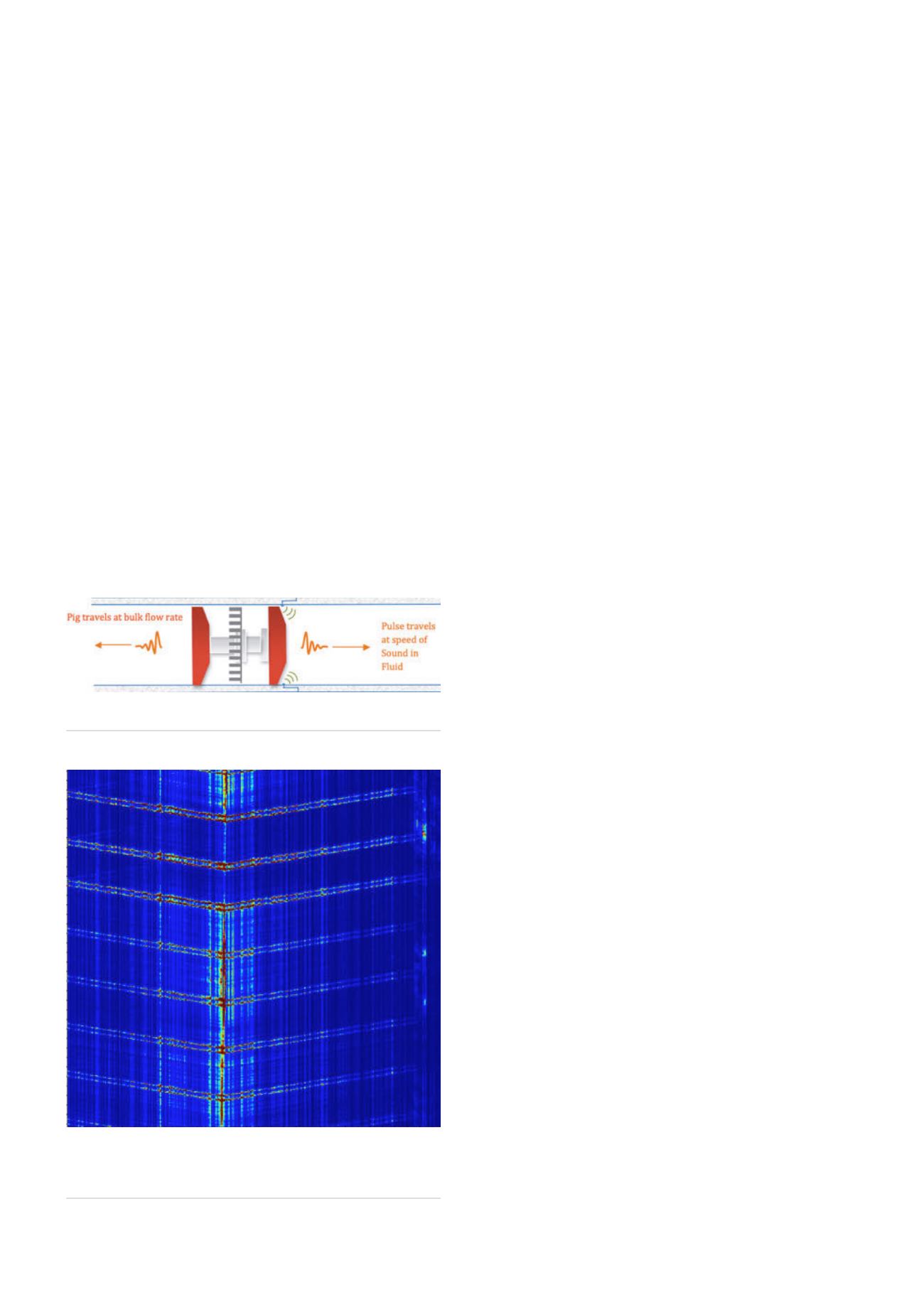
Any conventional tracking is either done by failure-prone
mechanical reed switches or direct listening in the field –
creating an additional maintenance burden and cost – and in
the case of working in a hazardous security environment, a
simple inspection action may become significantly burdened
by personnel protection costs and logistics. Recent advances
in external pipeline sensing with fibre optics (distributed
acoustic sensing: DAS) have revolutionised pipeline security
and theft prevention activities, and are poised to bring
similar benefits to leak detection activities. They can also
bring significant cost savings to conventional maintenance
operations.
Such systems act as highly sensitive, highly distributed and
highly accurate microphonic sensors virtualised across the
whole pipeline length, and can bring massive operational gains
to the conduct of pipeline scraping or inspection activities:
bringing a real time perspective on operations and absolute
position measurement at any time.
The value of this is not limited to speed tracking of pigs or
inspection devices, but includes a stuck pig location (to within
±
10 m) and immediate awareness of re-movement, distributed
flow profiling, slack line monitoring, highly accurate time to
trap alerts, gas pressure profiling, slug monitoring, multiple
pigs headway monitoring, and speed trace monitoring (in
static flow conditions). This article explores the methods of
monitoring internal pipeline operations from an external fibre
optic sensor, and illustrates from real world examples the
benefits that can accrue.
Principles of operation
The passage of a cleaning pig or inspection device produces
two distinct acoustic signals that are readily identified:
)
)
A low frequency rumble produced by the continuous
contact of the pig with the pipe.
)
)
A series of regular broadband pressure waves (transient
impulses) caused by the impact of the pig seals with the
butt welds.
This latter trace gives the passage of a pig a distinct
heartbeat, which is at the heart of DAS pig tracking
capabilities. The pressure wave extends far down the pipe in
either direction as a shock wave travelling at the speed of
sound in the product, typically ~1200 m/sec. in oil and
400 - 900 m/sec. in gas: dependent on pressure and
temperature.
A process analogous to a water hammer effect produces
the shock wave, whereby the laminar flow of the product
is suddenly brought to a momentary stop by the pig skirt
interfering with the weld on the two pipeline segments. This is
sufficient to produce a significant low frequency shock wave
that can extend many kilometres in both directions in the
pipeline fluid (liquid or high pressure gas).
These signals are easily detected by a close fibre optic
cable (to a few metres distant), which is connected to a
DAS interrogator. The DAS system converts the standard
telecoms fibre into a series of continuous, distributed
virtual microphones – typically 10 m in length – many
thousand across the complete length of pipeline. Each
virtual microphone corresponds to a specific 10 m section of
pipeline – whose position is easily calibrated. By continually
observing the signals at a sufficiently high frequency (typically
2500 Hz) the microphone output from each microphone can
be recorded over time. By performing these calculations in
parallel over every channel in real time, the acoustic profile
of the pipeline valid for that instant in time can be derived.
By observing this over an extended period, the behaviour of
static and dynamic artefacts can be continually monitored.
Automatically detecting, classifying, and locating the trace
via online detectors easily track devices, such as pigs tracked
along the pipeline with a positional resolution close to the
channel size – down to 10 m. This means that the passage
of the pig can be observed and listened to from a central
remote location. In Figure 1, there are a number of features
characteristic of the passage of a cleaning pig:
)
)
Double shock wave from the front and back skirts of the
scraper.
)
)
Separation of shock waves by a time corresponding to the
~11 m pipeline segment length.
)
)
Speed of sound in oil propagation (~1200 m/sec.
-1
) of
shock wave down the pipe.
Figure 1.
Schematic of a cleaning pig passing a butt weld and
the generation of the pressure pulse.
Figure 2.
Pipeline shock waves and interference noise from
a passing cleaning pig – with distance horizontal and time
vertical, the pressure pulses can be observed travelling in both
directions.
86
World Pipelines
/
FEBRUARY 2016


